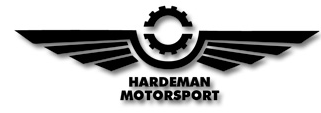THE PROBLEM
The stock center support bearing carrier holds the driveshaft in place with rubber so thin about 20 lbs of force moves it from center to the end of its travel. While that???s great for making sure no NVH makes it to the cabin, it doesn???t keep the bearing centered well under load, allows the bearing to sag over time and ruin the driveshaft alignment, and creates slop in the driveline during shifts and throttle application. Over time the OEM bushing sags and becomes brittle, eventually dry rotting and cracking. Even on the best-kept cars, the stock bushing can start to form cracks in as little as 5-10 years. When the bushing lets go, it can lead to excessive vibration and clunking, and put more stress on the bearing. To make matters worse, the stock carrier is molded onto the center support bearing, so it???s not easy to replace without special tools.
The videos below were recorded on an Audi, but Land Rover???s (and everyone else???s) OEM carrier design is similar. The shaft is not well-supported by the soft OEM carrier, so it???s allowed to travel off-center during rapid loading and unloading.
THE SOLUTION
This upgraded unit keeps the driveshaft firmly in place at all times, and its polyurethane construction ensures it will never wear out. The thick bushings ensure the driveshaft cannot move from center, maintaining driveshaft alignment at all times.
THE BUSHINGS
Two options are available for the bushings, both of which are many times over better than the stock bushings. We???ve paid close attention to the NVH levels associated with this upgrade. After extensive design iterations, we???ve come up with custom isolator bushings that separate the carrier from the body of the vehicle and mounting hardware. These carriers substantially reduce NVH levels.
The street bushings absorb most of the NVH from the drivetrain. Some light NVH is possible at some speeds in the form of a soft hum. With a modified exhaust or windows down you???ll probably never hear it.
The track bushings are for those who want no-compromise drivetrain performance. These may create a substantial amount of cabin noise. Not sure which is for you? Try them both, they???re interchangeable!
INSTALLATION
Installation doesn???t require removal of the driveshaft. The 2-part design clamps around the OEM bearing. The old carrier must be removed, so a cutting tool is required. The below video was made on the later generation L405 Range Rover, but the basic steps are the same:
Remove any braces or splash shields preventing exhaust and heat shield removal
Remove or lower exhaust in area of center support bearing if needed for access
Remove heat shielding covering center support bearing
Cut off OEM carrier and remove rubber support material with razorblade, leaving base layer of rubber intact on the bearing
Clamp new carrier around OEM bearing
Attach new carrier to car using supplied damper bushings and shoulder bolts. From bottom up, the stack-up is head of bolt, fender washer, damper bushing, foot of carrier, damper bushing, small washer, body of vehicle.
FITMENT
Later production L322 Range Rovers with Ford and Jaguar engines
Ford 3.6
Ford 4.4 TDV8 (not to be confused with BMW 4.4 V8)
Jaguar 4.2 V8
Jaguar 4.4 V8 (not to be confused with BMW 4.4 V8)
Jaguar 5.0 V8
Part Numbers
Full Assemblies
Street - L3222A0-S
Track - L3222A0-T
Both - L3222A0-B
Bushing Packs
Street - BSH04A0
Track - BSH04A1


